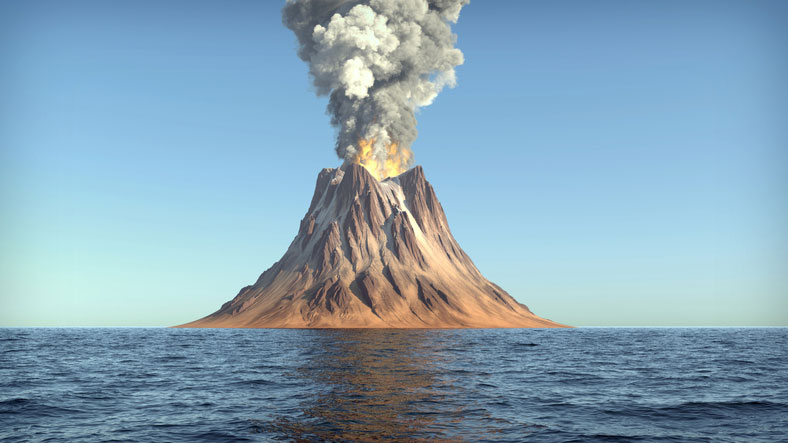

Earth scientists make important discoveries by focusing in on where related fields like geology, geochemistry, and ecology overlap. Understanding how our planet works requires an interdisciplinary approach, and this makes the earth sciences a perfect fit within a broader liberal arts curriculum.
What is Earth Science? – A Field that is Interdisciplinary by Nature
Earth science is a broad field that applies the scientific method to studying our planet. It incorporates fields like planetary science, geology, math, physics, biology, and many more to take an in-depth look at the nature of four main domains of the earth and how they interact with each other:
- Life zone – any place on the planet where there’s life; the biosphere
- Air zone – the earth’s atmosphere
- Water zone – the planet’s oceans, rivers, and lakes; the hydrosphere
- Rock and soil zone – rocks on continental and oceanic crust all the way down to the upper mantle; the lithosphere
These main domains encompass literally dozens of branches of science like oceanography, paleontology, mineralogy, soil science, and climatology. Earth sciences is the quintessential interdisciplinary field.
The courses offered across the dozens of sub-specializations within the earth sciences are as intriguing as they are countless. One semester you might be studying GIS computer programs, and the next you might be hammering rocks apart in a field geology course. Some examples of earth science courses include:
- Structural geology that examines how tectonic history can be interpreted by looking at rock stresses
- Soil science, looking at the bio-chemical cycle that’s responsible for enriching and depleting soils of their life-supporting nutrients
- Hydrology, especially the relationship between ground water, surface water, and people
- Remote sensing, examining how to gather and interpret data from sensors like sonar, x-rays, and spectrometers
The Earth Sciences Represent New Expressions of Ancient Themes
 Taking a step back, earth sciences also fits in well with the liberal arts because it’s humanity’s latest attempt to answer questions about how life originated and how it fits in with the natural world around us. Questions on these topics have traditionally been addressed in a cultural context through religion, art, and philosophy:
Taking a step back, earth sciences also fits in well with the liberal arts because it’s humanity’s latest attempt to answer questions about how life originated and how it fits in with the natural world around us. Questions on these topics have traditionally been addressed in a cultural context through religion, art, and philosophy:
- The ancient Chinese philosophy of the Five Phases was used for centuries to explain everything from the relationship of stars in the sky to medicine, human health, and politics. It’s still popular in folk culture today, and refers to the interaction between fire, water, wood, metal, and soil.
- A religious teaching from Hinduism says that life on earth happened thanks to five elements of nature: earth, water, fire, air and the ether.
- The ancient Greeks popularized an understanding of the world through what were then known as the classical elements: earth, water, air, and fire.
- Even children’s animation, an expression of ingrained societal themes, illustrate our culture’s transition into modernity while still paying homage to the past. The 1990s’ cartoon Captain Planet features protagonists with magical powers that call on earth, fire, wind, water, and heart.
The earth sciences today is just as curious about the same basic fields –life, air, water, and the soil/rocks– as our ancient ancestors were centuries ago. However today the philosophy used to analyze these realms has changed to the scientific method. But to appreciate this big-picture view you need to study the earth sciences within a liberal arts context.
The Earth Sciences Give us a Proper Perspective on Climate Change
 Climatologists use earth sciences to piece together clues from the past to make predictions about the future. Today many scientists have identified climate change as both an existential and immediate threat to many forms of life on our planet. This topic falls squarely in the field of earth sciences.
Climatologists use earth sciences to piece together clues from the past to make predictions about the future. Today many scientists have identified climate change as both an existential and immediate threat to many forms of life on our planet. This topic falls squarely in the field of earth sciences.
One clue comes from studying CO2 proxies like 13C isotopes in fossilized leaves. Through this technique earth scientists have determined that levels of atmospheric CO2 have varied widely over the past hundreds of millions of years, including during the Cretaceous period.
The Cretaceous period gets its name from the Latin word for chalk, creta, because this period is characterized by large chalk deposits made from the fossilized skeletons of a particular type of plankton that had scales of calcium carbonate (CaCO3). Earth scientists can therefore surmise that because carbonate-scale plankton flourished during the Cretaceous period, CO2 levels must have been much higher back then.
And when earth scientists measure the isotopic ratios of oxygen in the Cretaceous chalk it also points to a much warmer climate.
Earth scientists combine all this data into a picture that starts to emerge as ominous: higher levels of CO2 coincided with the complete melting of the polar ice caps, which raised the ocean levels 330 feet higher than they are today.
The earth sciences provide the framework for understanding the potential ramifications human activity can have on the climate. But getting this message out to the broader public requires a different skillset, and this is where a liberal arts background with emphases on communication, cultural studies, psychology, and sociology can be helpful.
At NASA the Earth Sciences are Studied Off-Planet
 Earth science has always had an eye towards the sky ever since the field was established. Some meteorites, made up of pieces of iron cores from planetesimals that obliterated each other billions of years ago when the solar system was forming, give earth scientists a glimpse into the possible nature of our own planet’s core that would be otherwise impossible.
Earth science has always had an eye towards the sky ever since the field was established. Some meteorites, made up of pieces of iron cores from planetesimals that obliterated each other billions of years ago when the solar system was forming, give earth scientists a glimpse into the possible nature of our own planet’s core that would be otherwise impossible.
Today advancements in technology have made the present the most exciting time to work in the earth sciences. NASA has its own Earth Science Division that funds projects to validate existing earth science theories, conduct research from space using satellites, and to design instruments that will be used in future space missions.
Right now earth scientists are working at NASA to analyze data that comes back from satellites about ocean temperatures, atmospheric gas composition, and ice cloud formation. They also coordinate with other earth scientists locally to do things like plan water management strategies and develop government policies that reduce our climate impact. Going forward into the future, interfacing with data and computer statistics is going to become an important niche within this field.
Using data gleaned from satellites circling the globe is just one sub-specialty in the earth sciences, but it’s symbolic of the big-picture approach that all scientists take in this interdisciplinary field. And this is made all the richer when viewed within a liberal arts context.




